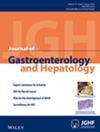Factors Influencing Liver Cirrhosis Progression in Wilson's Disease Patients: A Retrospective Cohort Study Over 5 Years
Abstract
Objectives
Wilson's disease (WD) is a rare autosomal recessive inherited disorder characterized by dysregulated copper metabolism, amenable to treatment with chelating agents. It manifests with hepatic and neurological symptoms, often precipitating the development of liver cirrhosis as a prominent complication. This study aims to elucidate the factors, biomarker alterations, and therapeutic modalities influencing the progression of cirrhosis in WD patients.
Methods
This retrospective cohort study utilized WD patient data from West China Fourth Hospital (May 2018–September 2023). The primary outcome was the development of cirrhosis in initially cirrhosis-free WD patients. LASSO-COX regression identified predictive factors. The 1:1 propensity score matching generated a matched subgroup for robust Cox regression validation.
Results
Among 133 initially cirrhosis-free WD patients, 47 developed cirrhosis during 35.98 (22.04–49.21) months. Significant differences were observed between the cirrhosis and non-cirrhosis groups in age at enrollment, age at WD diagnosis, clinical symptoms, educational levels, and administration of dimercaptosuccinic acid, compound glycyrrhizin polyene, and phosphatidylcholine. Multivariate Cox regression identified age at enrollment (hazard ratio [HR]: 1.038, 95% CI: 1.002–1.075), the use of glycyrrhizin (HR: 0.421, 95% CI: 0.192–0.926), erythrocyte (HR: 0.748, 95% CI: 0.626–0.895), and platelet counts (HR: 0.993, 95% CI: 0.988–0.998) associated with cirrhosis. Robust Cox analysis on the matched subgroup confirmed these findings.
Conclusion
Glycyrrhizic acid emerges as a potential hepatoprotective agent for WD patients. Furthermore, the progression of cirrhosis in WD patients is characterized by advanced age and decreased baseline levels of erythrocytes and platelets, suggesting their potential utility as prognostic indicators.

 求助内容:
求助内容: 应助结果提醒方式:
应助结果提醒方式:


